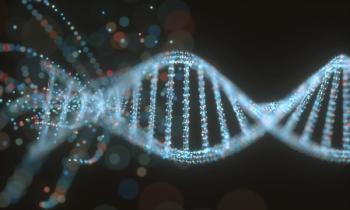
New tool accurately assesses infant development from 16 days of birth
Researchers have created the first standardized tool to identify developmental delays in infants aged as young as 16 days.
Northwestern University has developed a tool for the standardized assessment of language, cognitive, motor, and social-emotional skill development in infants aged 16 days to 42 months, publishing the development and validation of this tool in Infant Behavior and Development.1
This new National Institutes of Health (NIH) Toolbox provides a significant update to the prior standardized tool. While the prior tool was often used in clinical and research settings, it was only designed for patients aged at least 3 years through adulthood, leaving a significant gap in validated evaluation among infants and toddlers.1
“This was troubling because infants’ earliest years have a broad and significant impact on later developmental outcomes,” wrote investigators. “Early delays or deficits often cascade into persisting developmental challenges, making timely intervention critical."1
Early identification and intervention made possible
According to investigators, the tool can identify developmental delays early in life, a period when interventions are often the most effective. Infant learning and responses are tracked through videos and eye-tracking on an iPad app, and the efficacy of these factors has been validated across a diverse population of 2500 infants and toddlers.1
Results of the study indicated high test-retest correlations, highlighting the app as a reliable, scalable tool to evaluate developmental milestones. This tool will be available to researchers, clinicians, and school personnel to allow longitudinal assessments in children and adults.1
The app was developed based on the results of a survey from more than 400 domain experts and a systematic literature review of measures that met project criteria. These criteria included having established validity evidence, being sustainable for tablet-based implementation, able to be used in patients aged 16 days to 42 months, and having easy and swift scoring and administration.1
Reducing barriers to routine use
According to Aaron Kaat, PhD, professor of medical social sciences at Northwestern University Feinberg School of Medicine, the team found many widely used measures were either too expensive for regular research or required extensive training. To create measures that would meet these requirements, investigators worked with top research teams across the country.1
Challenges when designing the NIH Baby Toolbox included a need for comprehensive measures without separate licenses and platforms, costly equipment, or specialized training, and requiring measures effective at engaging and measuring the skills of this young population. The inclusion of videos allowed experts to clear these hurdles.1
The use of video content also allows for infants engaged in assessment tasks to be documented. It uses gaze-based learning paradigms that have been unavailable for broad assessments but have shown efficacy for measuring infants’ capacities.1
Validating the toolbox
In the trial validating the toolbox, higher executive function and memory (EF-Mem) was observed in older children, indicating a correlation between older age and faster processing of stimuli.2 Moderately high certainty was reported for test-retest of EF-Mem measures.
Investigators also highlighted moderately strong empirical reliability of the measure-level change sensitive scores, with a range of 0.65 to 0.79. This indicated 65% to 79% of the latent trait’s observed variance is the true variance. Overall, the tool was observed to be reliable for measuring development in young infants.2
“Now, armed with the first-ever standardized, validated, and widely available assessment tool, clinicians will be able to identify infant development and detect when development is going awry,” said Sandra Waxman, PhD, professor of psychology at Northwestern.1 “This early assessment… will support positive developmental outcomes in a way that was not possible before.”
References
- Northwestern University. A new tool to track infant development, starting at just 16 days old. News release. EurekAlert. August 25, 2025. Accessed August 27, 2025. https://www.eurekalert.org/news-releases/1095880
- Flynn RM, Han YC, Kaat AJ, et al. Development and validation of the NIH Baby Toolbox executive function and memory measures. Infant Behav Dev. Published online August 6, 2025. doi:10.1016/j.infbeh.2025.102118
Newsletter
Get the latest clinical updates, case studies, and expert commentary in obstetric and gynecologic care. Sign up now to stay informed.











